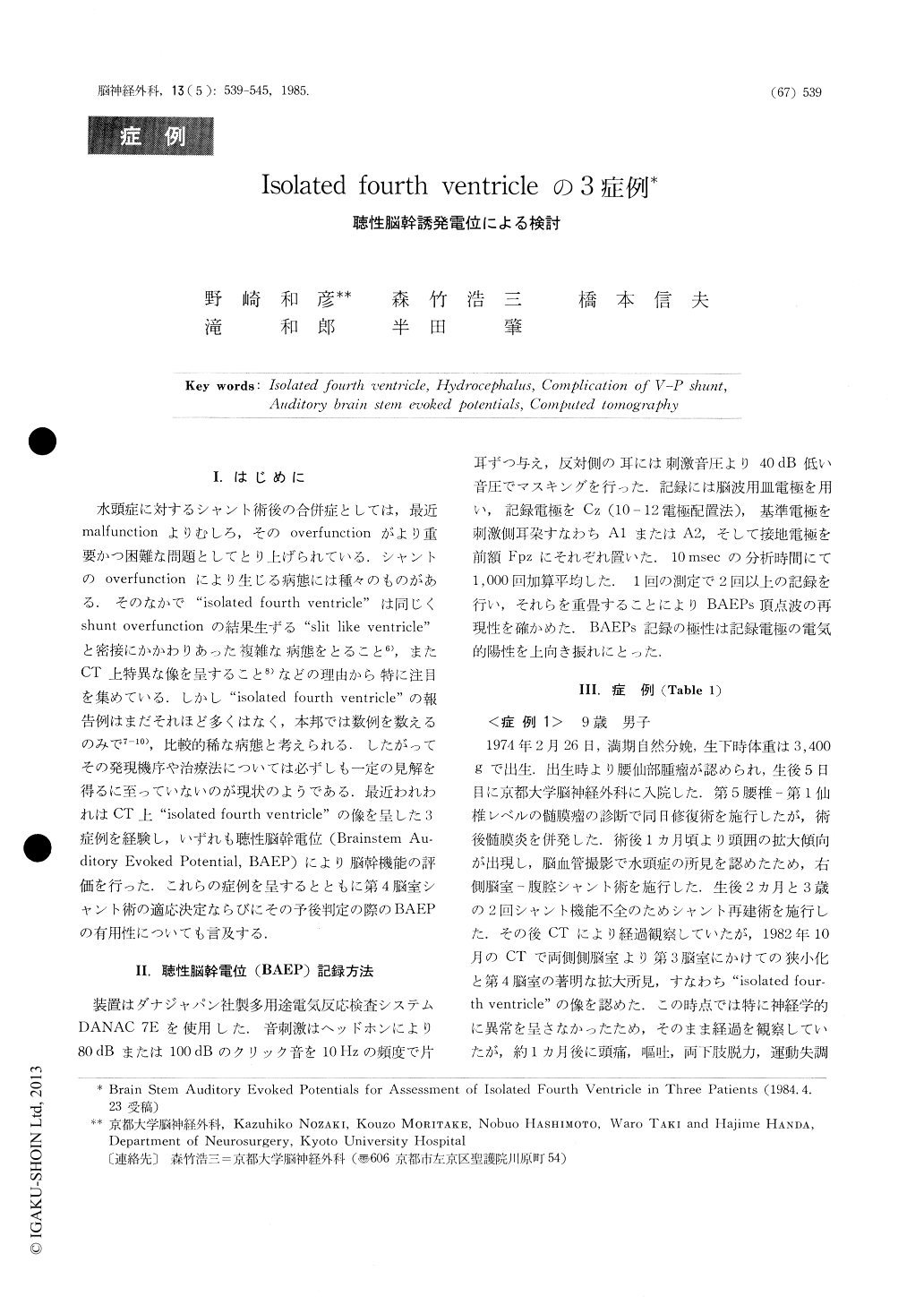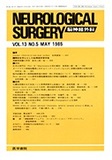Japanese
English
- 有料閲覧
- Abstract 文献概要
- 1ページ目 Look Inside
I.はじめに
水頭症に対するシャント術後の合併症としては,最近malfnctionよりむしろ,そのoverfnctionがより重要かつ困難な問題としてとり上げられている.シャントのoverfnctionにより生じる病態には種々のものがある.そのなかで"isotated fourth ventricle"は同じくshnt overfunctionの結果生ずる"slit like ventricle"と密接にかかわりあった複雑な病態をとること6),またCT上特異な像を呈すること8)などの理由から特に注目を集めている.しかし"isolated fourth ventricle"の報告例はまだそれほど多くはなく,本邦では数例を数えるのみで7-10),比較的稀な病態と考えられる.したがってその発現機序や治療法については必ずしも一定の見解を得るに至っていないのが現状のようである.最近われわれはCT上"isolated fourth ventricle"の像を呈した3症例を経験し,いずれも聴性脳幹電位(Brainstem Au-ditory Evoked Potential,BAEP)により脳幹機能の評価を行った.これらの症例を呈するとともに第4脳室シャント術の適応決定ならびにその予後判定の際のBAEPの有用性についても言及する.
Isolated fourth ventricle is an untoward but interest-ing complication caused by the shunt procedure, which has been recognized since the introduction of CT scanning. Auditory brain stem evoked potentials (BAEPs) were recorded in a patients with isolated fourth ventricle for assessment of brain stem function.
Case 1. A 9-year-old boy. He had undergone repair of the lumbosacral meningocele at birth, follow-ed by shunting procedures, including repeated shunt revision, for hydrocephalus which subsequently developed.

Copyright © 1985, Igaku-Shoin Ltd. All rights reserved.


